When the baby is healthy and cheerful, plays naughty and laughs happily, then everyone around is moved. But, sadly enough, all children get sick at some point. There can be many reasons for this: contact with sick children or adults, weakened immunity, insufficient hardening of the body, unhealthy diet, hypothermia or overheating of the body. ARI and flu often do not spare even the smallest children. In this article, we will find out which medicines are the safest for children, even the smallest.
To make it easier for the baby to cope with the illness, please him with new toys that will instantly cheer him up during this difficult period. You can buy excellent quality toys in the online store myToys.ru:
How to treat colds and flu in children
1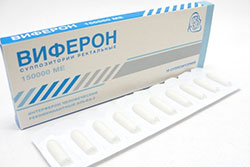
Viferon 150,000 IU
Available in the form of candles. The medicine must be stored in the refrigerator. It is a highly effective immunomodulatory and antiviral agent that can be used according to the doctor's indications even in premature and newborn babies. It is prescribed for various infectious and inflammatory diseases: acute respiratory infections, influenza, complications after certain bacterial infections, etc. Suppositories are administered rectally every 12 hours for 5 days. It is necessary to start putting candles as early as possible, at the first signs of the disease. Then Viferon treatment will be several times more effective.
2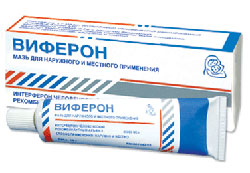
Approved for use in children over 1 year old. It is gently applied to the mucous membrane of the nose with a cotton swab 3-4 times a day. It is also necessary to store the ointment in the refrigerator. Viferon ointment is effective as part of complex therapy for ARVI and influenza.
3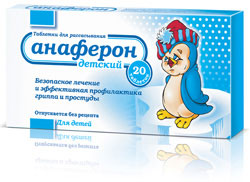
It is produced in the form of tablets, and it is permissible for use in babies from one month. It is also an immunomodulatory and antiviral agent, which is prescribed for the treatment and prevention of influenza, acute respiratory infections, diseases of the upper respiratory tract, as well as for some other diseases. The child must suck the pill, it has a pleasant sweet taste. But if the baby is very small, then 1 tablet must be dissolved in 15 ml of boiled water at room temperature. It is necessary to give the solution to the child to drink from a teaspoon. This will be 1 dose of the drug. And the drug itself is used according to the scheme indicated in the instructions.
4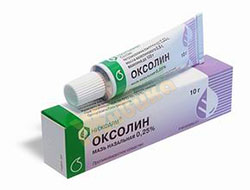
- an old proven tool that was created in the days of the USSR. Store it in the refrigerator. A small amount of ointment is applied to a cotton swab and gently smeared on the mucous membrane of the baby's nose at the entrance. The ointment is approved for use from 0 months, but, as a rule, they begin to use it for preventive purposes from one month, before the first trip to the clinic, where there is a risk of infection. The most effective oxolinic ointment for the prevention of flu and colds, due therapeutic effect she doesn't.
5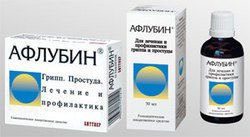
Is an excellent homeopathic remedy that helps fight the symptoms of flu and colds. It can be used in any childhood, most importantly, observe the dosages indicated in the instructions. Since it tastes unpleasant, and many children may not like it, the required amount of drops can be dissolved in a small amount of water or tea and given to the child to drink from a spoon. Aflubin has anti-inflammatory, immunomodulatory, antipyretic and detoxifying effects, it also exhibits antiviral activity. It is necessary to give medicine as soon as you notice signs of the disease. Then its efficiency increases many times over.
6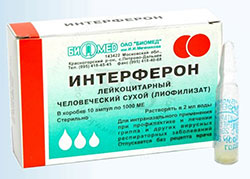
Human leukocyte interferon
Sold in ampoules, and must be stored in the refrigerator. The medicine can be used in children from birth. Prepare a solution before use. For this, 2 ml of boiled chilled water is added to an open ampoule to the mark. Then it is pipetted into the child's nose with a pipette. It is used to treat acute respiratory viral infectious diseases, including influenza. Interferon treatment should be started as early as possible.
7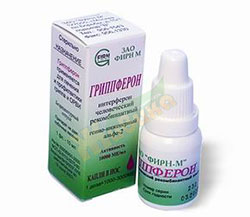
- antiviral, immunomodulatory, anti-inflammatory and antimicrobial agent that can be used in children from birth. Grippferon contains the above-mentioned interferon. The bottle with drops is already ready for use and you do not need to dilute something additionally before instilling the spout. Store the medicine in the refrigerator, after opening the bottle, its shelf life is 1 month. The concentration of drops in the vial of Grippferon is higher than in the prepared solution of Interferon. Therefore, children under 1 year old need to bury it only 5 times a day, and not every hour.
8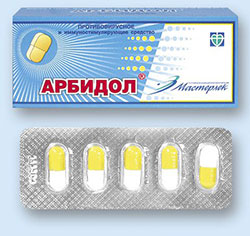
– antiviral agent, which successfully fights against ARVI, influenza A and B, and others. The drug is available in the form of capsules or tablets, and is approved for use in children from the age of two. Arbidol stimulates the strengthening of immunity, and also increases the body's resistance to viral infections. It can also be used for prevention.
9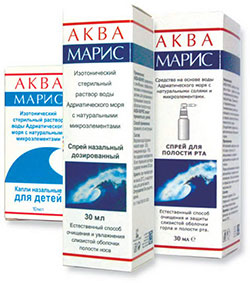
- drops that successfully help fight colds and runny nose. They are also well suited for prophylaxis and can be used in children of all ages. Aquamaris drops restore the mucous membrane of the nose and increase local immunity, making it easier for the body to fight viruses. Aquamaris drops are produced from the water of the Adriatic Sea. Some parents believe that the drops are unreasonably expensive and prefer to simply rinse their child's nose. saline or a saline solution purchased from a pharmacy. You can cook it yourself at home. To do this, stir 1 teaspoon of salt in 1 liter of cooled boiled water.
Derinat
- nose drops, which are also used for the treatment and prevention of influenza, acute respiratory viral infections and acute respiratory infections, diseases of the upper respiratory tract. Derinat is approved for use in children from birth at the first signs of a cold.
Of course, there are a lot of childhood diseases, and self-medication is highly discouraged. Indeed, loving parents sometimes cannot distinguish a cold from the flu, or even more so a sore throat, which needs to be treated in a completely different way, with the use of antibiotics and the indispensable participation of the attending physician.
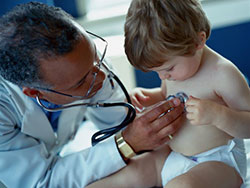
This article will focus on medications that are practically harmless and can be used by parents, provided the correct diagnosis is made, for the treatment of acute respiratory infections, acute respiratory viral infections, influenza and some others. You can also ask your doctor if this medication is appropriate for your child. And be sure to read the instructions for use before you start giving a new drug to your baby.
You can even taste it yourself so you know how to expect your child to react. As a rule, medicines for small children taste good, and all you have to do is give your child the correct dosage. Medicines referred to in this article, although acceptable for use in children from birth or children younger agebut they are still drugs, and what works for one child may not work for another at all. Therefore, do not neglect medical intervention, and do not use this article as a basis for self-medication. After all, we are talking about the health of your beloved baby.
Colds and flu have almost the same symptoms but are handled differently by children. Fever, nasal congestion and sore throat in a baby are signs of these viral diseases... At their first manifestations, it is advisable to consult a doctor in order for him to prescribe the necessary medications.
However, most parents choose to self-medicate and rely on pharmacists to recommend flu and cold medications. But which one is best for the child? Which ones are effective and safe? Do not forget about their effect on the child's body.
Influenza and colds are classified as ARVI (respiratory viral infections). They are called various viruses, which are transmitted by airborne droplets when coughing and talking. A baby can easily catch an infection in kindergarten or at home if one of the relatives is sick.
Among them are antiviral drugscontaining interferon - a protein in the body that blocks the activity of the virus. It quickly destroys the virus, penetrates the cells of the body, creating a protective barrier. These remedies are strong enough, and recovery is quicker when used.
1. "Viferon" - for the treatment of colds is used in the form of rectal suppositories. The course of therapy can be from 7 to 10 days.
- Up to 3 years, 1 suppository is prescribed in a dose of 150,000 ME, 2 times a day.
- From 3 to 14 years old, 500,000 ME, 1 candle once a day.
- As a preventive measure, 1 suppository is prescribed every other day for 20 days.
2. "Grippferon" - available in the form of nasal drops. The course is 5 days.
- Up to 1 year, appoint 1 drop in each nasal passage 1-2 times a day.
- From 1 to 3 years, 2 drops 3-4 times a day.
- From 3 to 14 years old, 2 drops 4-5 times a day.
There are also antiviral drugs that provoke the production of interferon - they contain special substances that stimulate the body's defenses against colds. These drugs are weaker than those containing interferon. Usually they are used for individual intolerance to interferon.
1. "Anaferon" is an antiviral pill intended for resorption. The course of treatment is 5 to 14 days.
- From 1 month of life to 3 years, 1 tab is prescribed. 3 times a day (dissolve in a small amount of boiled water).
- From 3 to 7 years, 1 tab. 4 times a day.
- For the prevention of colds, you need to drink 1 tablet for three months, with an individual appointment, the course can reach 4-6 months.
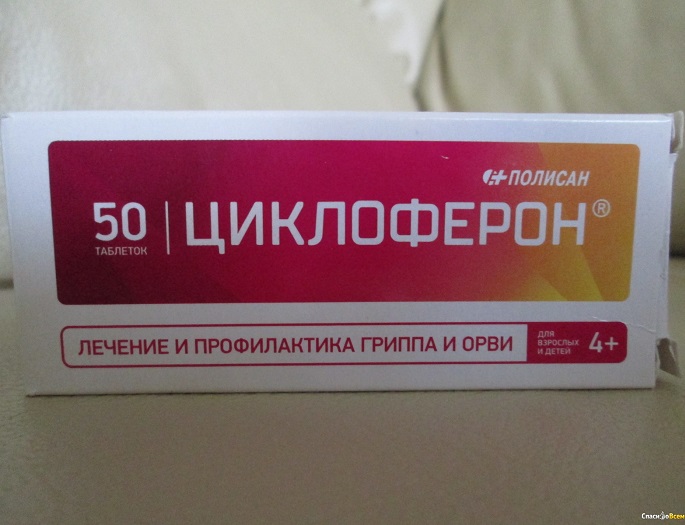
2. "Cycloferon" - antiviral medicine for children from the flu. It is produced in the form of enteric-coated tablets. The course of therapy is 10 days. Take 30 min. before meals.
- It is prescribed from 4 to 6 years old, 150 mg once a day.
- From 7 to 11 years old, 1 tab. twice a day.
- From 12 years old from 300 to 600 mg per day.
- After 3 weeks, an additional course is carried out for prevention.
3. "Arbidol" - available in capsules and tablets. The course of therapy is 10 - 14 days.
- Appointed from 3 years to 6, 1 tab. (50 mg) per day.
- From 6 to 12 years old, 1 capsule (100 mg) per day.
- From the age of 12, for prophylaxis, 100 mg once a day, the duration of admission is 12-14 days.
Symptomatic remedies
Symptomatic treatment for flu and colds is carried out in order to alleviate the condition of the child. Usually ARVI occurs with fever, sore throat and body aches, nasal congestion. All of these symptoms will help eliminate the drugs listed below.
Pain relievers and antipyretics - help to reduce the baby's body temperature, as well as relieve pain in case of a cold.
1. "Paracetamol" - produced in, and syrup. The course is 5 - 7 days.
- For babies under the age of 3 months, the daily dose is 10 mg / kg.
- From 3 months to 1 year 60 - 120 mg per day.
- From 1 year to 5 years, 120 - 250 mg per day.
- From 5 years old to 250 - 500 mg once a day.
2. "Ibufen" - antipyretic medicine in the form of a suspension. The course of treatment should not exceed 5 days.
- For babies from 3 to 6 months, take 50 mg 3 times a day.
- From 6 to 12 months, 50 mg 3-4 times a day.
- From 1 year to 3 years, 5 ml 3 times a day.
- From 4 to 6 years old 150 mg 3 times a day.
- From 7 to 9 years old, 200 mg no more than 3 times a day.
- From 10 to 12 years old, 15 ml 3 times a day.
Vasoconstrictor - usually used in the form of drops to eliminate swelling in the nose. Reduce the manifestations of a runny nose, contribute to the normalization of nasal breathing.
1. "Nazivin" - drops against the common cold. The duration of the course is from 5 to 7 days.
- Newborns from 4 weeks are prescribed a 0.01% solution, 1 drop in each nostril 2-3 times a day.
- From 1 month to a year 1-2 drops in the nostril 2-3 per day.
- From 1 year to 6 years, a 0.025% solution is prescribed, 1 drop per nostril 2-3 times a day.
- From 6 years old, dosage 0.05%, 2 drops in each nostril 2 times a day.
2. "Otrivin" - a spray to relieve nasal breathing. The course of treatment is 10 days.
- Babies from 1 month to 6 years old are prescribed one injection (0.05%) in each nostril 2 times a day.
- Over 6 years old (0.1%) 2-3 injections 4 times a day.
Antihistamines - serve to reduce swelling of the mucous membranes of the throat, prevent. Most often they are used for viral sore throat, accompanied by a sore throat.
1. "" - medicine against allergies. Relieves puffiness, eliminates lacrimation. One tablet contains 25 mg of the drug. The course of taking the drug should not exceed 5 days.
- From 1 to 12 months tab. 2 times a day (in the form of a powder with baby food).
- From 1 year to 6 years old ¼ tab. 2-3 times a day.
- From 6 years old to 12, 0.5 tab. 3 times a day.
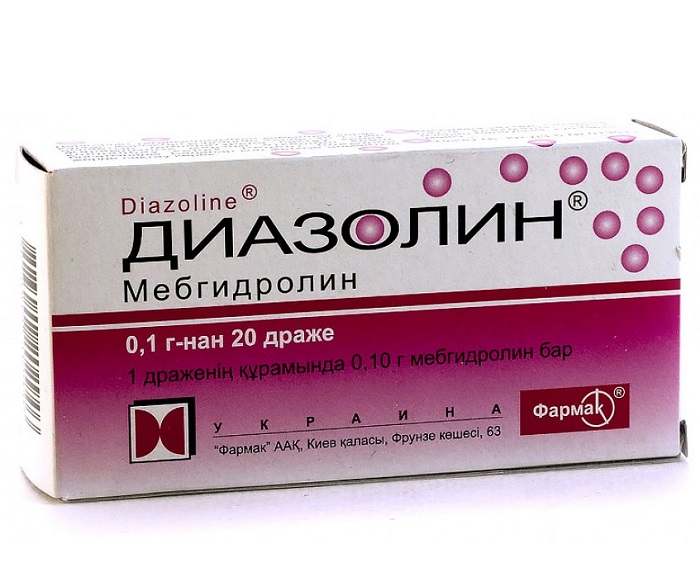
2. "Diazolin" - anti-allergy dragee. Eliminates edema of mucous membranes. The course of admission is no more than 3 - 5 days.
- It is prescribed for babies under 2 years of age, 50 mg once a day.
- From 2 to 5 years, 100 - 150 mg once a day.
- From 6 years old to 10, 150-200 mg once a day.
- Over 10 years old 150 mg 2 times a day.
Also, symptomatic therapy includes combination drugs that contain both pain relievers and antihistamines. These medicines are based on paracetamol. These include "Teraflu", "Antigrippin", etc. However, these drugs must be used with caution in children under 12 years of age, as they increase the burden on the heart and liver.
For young children, symptomatic remedies are best given separately and as needed. For example, if the baby does not have a sore throat, then they can not be used. Or, if there is no runny nose, then there is no need for vasoconstrictor drugs.
Summing up
The main treatment for flu and colds is with antiviral drugs. Pain relievers and antihistamines can be used to alleviate the condition of the child. These medications are prescribed by your doctor depending on the severity of your illness.
- Never use antibiotics to treat a viral disease, they are taken against a bacterial infection.
- Before starting treatment, you need to consult a pediatrician. Be sure to read the instructions for the medication prescribed by your doctor and follow the dosage.
A cold in a child is a viral infectious upper respiratory tract disease lasting no more than one week... A cold is not a threat to a baby's life, but even despite this, young mothers often panic, which in no case should be done. Therefore, parents should not sound the alarm if the child often suffers from colds.
Colds can be dangerous if complications arise. To protect from this, mothers must surround their child with warmth and care, providing him with proper care.
Often, a sharp jump in temperature, especially at night, signals the manifestation of a cold... This may be evidenced by the initial state of the baby, if he became moody, restless, has a poor appetite, gets tired quickly, drowsy, dramatically changes his mood and refuses to play.
- The kid sneezes;
- The eyes turn red;
- Lachrymation;
- Stuffy nose;
- Enlarged submandibular, cervical and axillary lymph nodes
- Migraines and malaise.
A cold in a baby under 1 year old can be manifested by a change in skin color, respiratory failure, sweating, a violation of the feeding regime, the appearance of a rash.
The most an early sign of a cold is a runny nose, with which you need to resist initially, because very young children still do not know how to blow their nose themselves. Cough is the second symptom of the disease. In this case, the baby must be shown to the doctor, since its root causes may be different.
For colds, an increase in body temperature is also characteristic. When the temperature is above 37, this signals the onset of inflammation and the fight of the immune system with the causative agents of viral infection.
Treatment
The common cold is a self-healing disease. Basically, it is not required to treat it with specific methods, it disappears on its own.
Home care
Home treatment is intended to relieve symptoms and prevent complications. Treatment should consist of the following measures and actions:
- Airing the room to make it easier for the child to breathe (at the same time, move him to another room for a while);
- Change of bed linen 2 times a week (more often if you sweat);
- Babies need to be turned from one barrel to another to avoid stagnation in the lungs;
- Plentiful warm drink and adequate rest;
- The diet should be rich in carbohydrates, fruits and vegetables.
Antiviral drugs
Before giving your child antiviral drugs, check with your doctor, because he will prescribe exactly the pills that are right for your baby. Before you buy antiviral pills, syrups and similar medicines, you must take into account the main rules for their choice:
- You know your child's body better and after studying the instructions, you decided that these drugs and medicines are not suitable for him, contact the pediatrician again;
- It is not necessary to give the baby all the pills at the same time according to the principle “the more medicine the better”. It will not work to cure a cold with this method;
- Be aware that just because a pill or other drug is sold without a prescription doesn’t mean the drug is safe;
- Symptomatic treatment includes various remedies and includes cold pills on the list, so it is necessary to consider how these drugs interact with each other.
To restore the normal temperature level (if the indicator gives 39C) in children, pills and medicines based on Paracetamol contribute. When coughing, you can take Mukaltin tablets or Gedelix syrup.
Most Popular cough medicines for children, including the following tablets:
- Anaferon for children;
- Donormil;
- Rinza;
- Remantadine;
- Sinupret;
- Rinikold;
- Barralgetas;
- Grammidin.
Homeopathic remedies
Homeopathy is new method treatment according to the rule "like can be cured by like", which has reached immense fame. Homeopathy is recommended for children and pregnant women as synthetic pills can cause side effects, and homeopathic remedies exclude them.
Homeopathy, as medical science says that you need to make medicines from natural substances.Homeopathy includes various medications for the treatment of many adult and pediatric diseases, only they should be prescribed by an experienced specialist with appropriate education.
Children's homeopathy for colds includes drugs such as Aconit 30, Belladonna 30, Pulsatilla 30, Nux Vom 30, Brionia 30, Cuprum meth and many others.
Candles
Candles – cone-shaped preparations, in a solid state, but in the presence of temperature have the properties of melting, then the drug is absorbed through the rectum, quickly absorbed, which is the main advantage of the drug.
Doctors advise candles based on their benefits:
- Using suppositories is effective, since the child cannot always swallow the pills;
- The absorption of the drug is consistent;
- Suppositories in the fight against viral diseases can be used from the moment the baby is born, but most often rectal suppositories are prescribed for infants and children under 3 years of age.
The most famous and efficient candles for childhood colds:
- Calpol;
- Efferalgan;
- Anafen;
- Genferon;
- for kids.
Drops
The use of vasoconstrictor drops helps to relieve the common cold. For children under one year old, these drugs can be used as a 0.01% solution diluted with boiled water. Vasodilatory drops have antimicrobial and antiviral effects.
The most popular drugs are:
- Pinosol;
- Nazivin;
- Collargol;
- Polydex;
- Protargol.
Doctors do not recommend using drugs such as Nazol baby, Xymelin and Tizin more than 4 times throughout the day. The use of nasal drops should not be abused, as they facilitate breathing for the first 3 days and lead to addiction, therefore, the nose should be rinsed further.
Rinsing the nose
A runny nose is the beginning of any cold illness. To cleanse the spout in children under 1 year old, use cotton wicks moistened with a solution of soda before feeding.
An effective remedy for the common cold is aloe juice, which is diluted with water. This remedy is instilled in the baby 3 times a day, 4 drops. You can rinse the spout with a solution sea \u200b\u200bsalt - Aquamaris, Aquador, or treat a cold with a small concentration of antiseptics (Miramistin). In the form of sprays, these products are most convenient to use.
Ointments
Treatment of colds in children should be complex, therefore, topical external use preparations are used - namely, an ointment for colds.
Most often, in pharmacy chains, parents are offered the following means:
- Anti-cold ointment Doctor IOM;
- Oxolinic ointment;
- Ointment Vicks Active Balm against the common cold;
- Ointment for the common cold of Dr. Tice;
- Pulmex Baby ointment for a baby up to a year.
Oxolinic ointment is the most effective and popular, used both for medicinal purposes and for the prevention of colds in children. The ointment is applied 2 times a day, mainly before going to kindergarten, school, or if there are infected people at home.
How to apply
In order to cure a runny nose in a child, this ointment is applied in the thinnest layer 3 times a day for 4-5 days.
- Ointments Dr. IOM and Dr. Taisa are prescribed for children from 2 years of age and older. They are characterized by antimicrobial, anti-inflammatory and expectorant effects.
- Ointment against the common cold for children Vicks Active Balsam is intended to treat a runny nose and cough with inflammation of the respiratory tract.
- Pulmex Baby ointment is recommended for use as an adjuvant to cure a cold cough and upper airways in infants, after 6 months of their life.
Powder preparations
It is impossible to cure a cold using powder preparations, since these medicines only help to alleviate the symptoms. Taking such medications, you must follow a strict regimen. Often, powders are prescribed to be taken to a child complete with a provitamin complex, which helps to cure the disease.
- Fervex for children;
- Panadol Baby and Infant;
- Children's Efferalgan;
- Antigrippin for children.
Specified powders have analgesic, antipyretic, antihistamine and tonic effect... Children need to make solutions using powders that must be taken orally.
Folk remedies
To protect your baby from viral diseases, you need to strengthen his immunity. Folk remedies widely used both in prophylactic treatment and in the treatment of colds. If you notice that your baby is sneezing, you need to make teas from natural remedies.
Ginger is an effective remedy for colds. The tea, which contains ginger, helps the body fight the virus. For its preparation, it is enough to use ginger, lemon, and honey. Since ginger, you can use tea, in which the main component is viburnum.
Viburnum is very effective at temperature. Viburnum is ground with sugar and placed in the refrigerator along with the bone. In winter, you can drink healthy tea. For children under 5 years old, when making tea, they adhere to the following proportion: 1 coffee spoon of any berries per 200 ml of water. P it is useful to make tea from linden or strawberry... You can prepare herbal infusions from mint and lemon balm.
Prevention
Prevention colds in children it will help protect from all kinds of infections and ailments. You bring a child to the kindergarten and notice how a boy from his group sneezes, in this case you need to act, otherwise tomorrow you will see how your baby has become infected and does not feel well.
